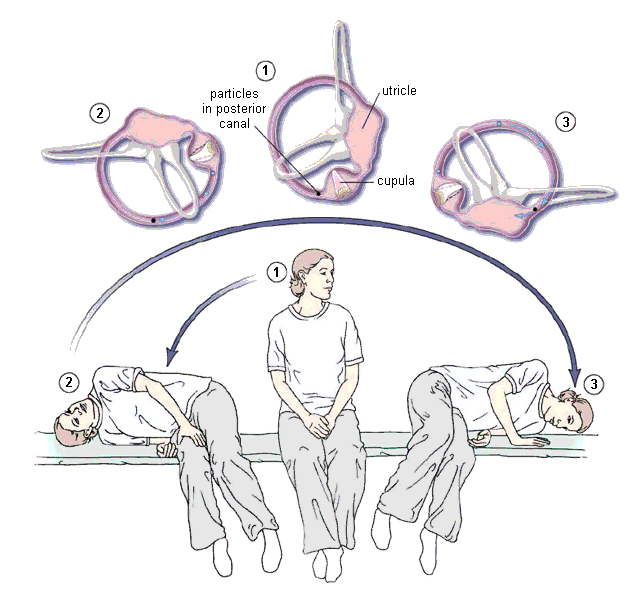In the several years after Brandt and Daroff published their classic article, Physical therapy for benign paroxysmal positional vertigo, France became a hotbed of activity in developing techniques that would eventually become known as Canalith Repositioning. Several researchers began experimenting with movements (not exercises) intended to promote loosening and redistribution of otoliths from the semi-circular canals.
That description, paraphrasing Brandt and Daroff, is important as these treatments were intended to treat the Cupulolithiasis variation of BPPV. As a whole, these were referred to a “single treatment procedures”, but each researcher put their own stamp, and name, on the procedures as they evolved. In 1985, Toupet and Semont {{1}}[[1]]Toupet, M., & Semont, A. (1985). La physiotherapie du vertige paroxystique benin. In: R. Hausler (Ed.), Les Vertiges d’origine peripherique et centrale (pp. 21–27). Paris: Ibsen.(yes, that Semont)[[1]] published an article where they describe a treatment later referred to as the “brisk method.”
In 1987 and1988, Norre and Beckers {{2}}[[2]]Norre, M. E., & Beckers, A. (1987). Exercise treatment for paroxysmal positional vertigo: comparison of two types of exercise. Arch Otol Rhinol Laryngol, 244, 291–294. ;Norre, M. E., & Beckers, A. (1988). Comparative study of two types of exercise treatment for paroxysmal positioning vertigo. Advances in Oto-Rhino-Laryngology, 42, 287–289.[[2]]performed experiments comparing the relative effectiveness of medication, habituation exercises and this new “brisk method.” Not surprising to us now, they did not find medication to be helpful in reducing either subjective complaints or nystagmus in patients with Benign Paroxysmal Positional Vertigo (BPPV). They did find that patients improved with habituation exercises (32% reported improvement at one week), but they had greatest success with the “brisk method” with 52% reporting improvement at one week follow up.
The next step was to refine (and rename) the procedure and apply it to a large number of patients with BPPV. This resulted in the seminal paper from Semont, Fryss and Vitte, Curing the BPPV with a Liberatory Maneuver. Over time this maneuver has once again changed names to the more familiar “Semont Maneuver.”







